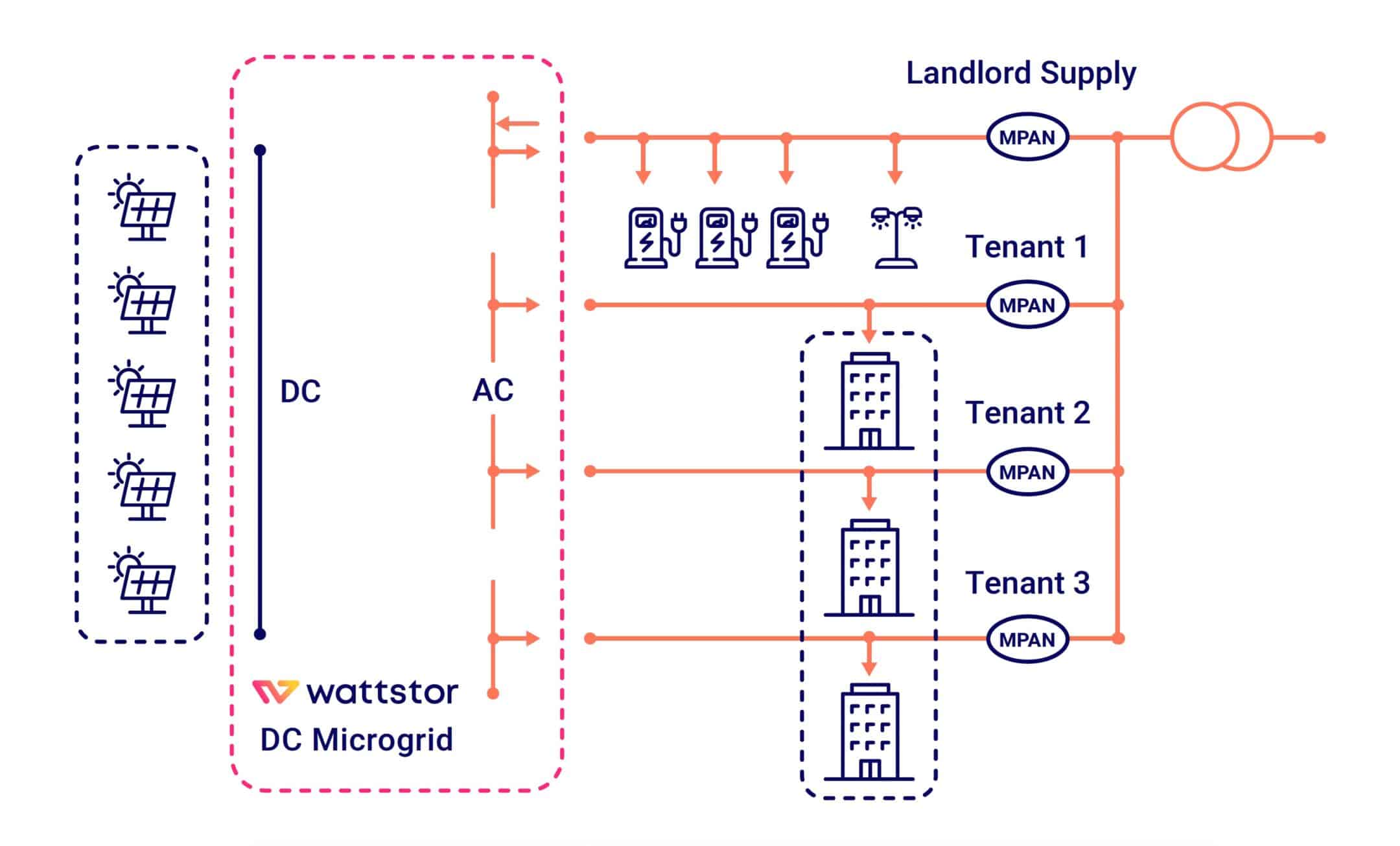Onsite Solar: Unlocking the Net-Zero Opportunity
Onsite Solar is becoming a vital solution for businesses facing rising energy costs and growing pressure to decarbonise. Over the past two years, global price volatility has pushed organisations to rethink how they generate and manage power.
As companies commit to ambitious sustainability goals, many are turning to onsite solar systems to cut emissions, reduce long-term costs, and strengthen energy resilience. However, traditional approaches can fall short due to grid constraints and low returns on exported electricity.
At Wattstor, we explore how smarter energy management and storage solutions can unlock the full potential of onsite solar — helping businesses take meaningful steps toward achieving net zero.
Supporting Multi-Site EV Charging Rollout
The Business Challenge
National Highways operate over 200 motorway service stations across the UK and are upgrading sites with rapid EV chargers capable of delivering ~1 MW each.
However, many stations were built in the 1970s and weren’t designed for today’s high energy demands. Grid upgrades are costly and slow, and limited grid capacity restricts how much onsite solar power can be used or exported.
The Wattstor Solution
Wattstor provides containerised battery storage systems combined with the dynamic energy management platform, Podium. The system stores surplus solar energy during low-demand periods and releases it when EV charging demand peaks.
By actively managing onsite generation and consumption, Wattstor helps maximise solar utilisation and stay within existing grid limits — unlocking reliable, efficient EV charging at each site.
Read more about overcoming grid constraints.
Reaching Net-Zero Through Solar Optimisation
The Business Challenge
Mawdsleys, the UK’s largest pharmaceutical distributor, set out to make their new flagship warehouse as energy efficient as possible — aiming to generate as much electricity as they consume through rooftop solar.
However, their energy demand averaged around 170 kW per hour. Due to local grid limits, they could only install a 750 kW solar array instead of the required 1.7 MW. That restricted onsite generation to just 40% of their target capacity.
The Wattstor Solution
Wattstor deployed a DC-coupled battery system that allows Mawdsleys to fully maximise their solar array. The setup connects a 2,500 kWh battery directly to the panels via a DC/DC converter. This enables efficient storage and flexible distribution of energy between the site and the grid.
Through Wattstor’s Podium Energy Management System (EMS), the site can now intelligently balance energy flows. It also optimises self-consumption and sells excess solar back to the grid. This approach not only supports future EV integration but also brings Mawdsleys closer to their goal of achieving Net Zero.
Empowering Landlords and Tenants with Microgrids for Net-Zero
The Business Challenge
Commercial complexes and retail parks often host multiple tenants — each with very different energy demands. One business might peak early in the morning, another during the day, and yet another overnight to charge EV fleets.
Installing separate solar arrays and meters for each tenant makes it difficult to share energy efficiently. As a result, much of the renewable energy generated onsite is exported to the grid at low-value times instead of being used locally.
The Wattstor Solution
Wattstor’s DC microgrid solution connects all onsite solar generation into a single, shared system — managed and optimised through our Podium EMS. Power is intelligently distributed between tenants and landlords based on real-time demand, ensuring the most efficient use of onsite solar.
This approach works across multi-building estates or retail parks, where energy demand varies widely between units. By linking all buildings into one coordinated microgrid, property owners can maximise renewable energy use and reduce reliance on the grid — moving the entire site closer to Net Zero.
Key Takeaways
- Electrification of all businesses is accelerating.
- Grid constraint is the new norm for both demand growth and solar deployment.
- Volatile electricity markets are also the new norm, where dynamic control of “behind the meter” energy generation assets, is needed in order to access this dynamic value.
- Microgrid know-how is becoming essential as existing supply chains have capability gaps.
- DC coupling of solar allows businesses to mitigate grid constraints, reduce their energy bills, cut carbon and accelerate their net-zero ambitions.
- Through “Electricity as a Service” Wattstor can deliver net-zero for customers whilst managing the complexity of delivery and dynamic operations of “behind the meter” microgrids.
Interested to learn more? Email us at [email protected].
Need help? Visit our Wattstor Customer Support Portal.
Know someone who'd be interested in this? Why not share it:




